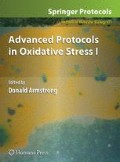Abstract
During the last few years, reliable and simple tests have been proposed to estimate oxidative stress in vivo. Many of them can be easily adapted to automated analyzers, permitting the simultaneous processing of a large number of samples in a greatly reduced time, avoiding manual sample and reagent handling, and reducing variability sources. In this chapter, description of protocols for the estimation of reactive oxygen metabolites and the antioxidant capacity (respectively the d-ROMs and OXY Adsorbent Test, Diacron, Grosseto, Italy) by using the clinical chemistry analyzer SYNCHRON, CX 9 PRO (Beckman Coulter, Brea, CA, USA) is reported as an example of such an automated procedure that can be applied in the clinical setting. Furthermore, a calculation to compute a global oxidative stress index (Oxidative-INDEX), reflecting both oxidative and antioxidant counterparts, and, therefore, a potentially more powerful parameter, is also described.
Access this chapter
Tax calculation will be finalised at checkout
Purchases are for personal use only
References
Griendling KK, FitzGerald GA (2003) Oxidative stress and cardiovascular injury: Part I: basic mechanisms and in vivo monitoring of ROS. Circulation 108:1912–1916.
Griendling KK, FitzGerald GA (2003) Oxidative stress and cardiovascular injury: Part II: animal and human studies. Circulation 108:2034–2040.
Madamanchi NR, Vendrov A, Runge MS (2005) Oxidative stress and vascular disease. Arterioscler Thromb Vasc Biol 25:29–38.
Ridker PM, Brown NJ, Vaughan DE, Harrison DG, Mehta JL (2004) Established and emerging plasma biomarkers in the prediction of first atherothrombotic events. Circulation 109:IV6–IV19.
Vassalle C, Andreassi MG (2004) 8-iso-prostaglandin F2alpha as a risk marker in patients with coronary heart disease. Circulation 110:49–50.
Vassalle C, Boni C, Di Cecco P, Ndreu R, Zucchelli GC (2006) Automation and validation of a fast method for the assessment of in vivo oxidative stress levels. Clin Chem Lab Med 44:1372–1375.
Vassalle C, Landi P, Boni C, Zucchelli G (2007) Oxidative stress evaluated using an automated method for hydroperoxide estimation in patients with coronary artery disease. Clin Chem Lab Med 45:367–371.
Vassalle C, Maffei S, Boni C, Zucchelli GC (2008). Gender-related differences in oxidative stress levels among elderly patients with coronary artery disease. Fertil Steril 89: 608–613.
Iamele L, Fiocchi R, Vernocchi A (2002) Evaluation of an automated spectrophotometric assay for reactive oxygen metabolites in serum. Clin Chem Lab Med 40:673–676.
Cavalleri A, Colombo C, Venturelli E, Miceli R, Mariani L, Cornelli U, Pala V, Berrino F, Secreto G (2004) Evaluation of reactive oxygen metabolites in frozen serum samples. Effect of storage and repeated thawing. Int J Biol Markers 19:250–253.
Vassalle C, Masini S, Carpeggiani C, L’Abbate A, Boni C, Zucchelli GC (2004) In vivo total antioxidant capacity: comparison of two different analytical methods. Clin Chem Lab Med 42:84–89.
Jackson P, Loughrey CM, Lightbody JH, McNamee PT, Young IS (1995) Effect of hemodialysis on total antioxidant capacity and serum antioxidants in patients with chronic renal failure. Clin Chem 41: 1135–1138.
Author information
Authors and Affiliations
Editor information
Editors and Affiliations
Rights and permissions
Copyright information
© 2008 Humana Press, a part of Springer Science+Business Media, LLC
About this protocol
Cite this protocol
Vassalle, C. (2008). An Easy and Reliable Automated Method to Estimate Oxidative Stress in the Clinical Setting. In: Armstrong, D. (eds) Advanced Protocols in Oxidative Stress I. Methods In Molecular Biology, vol 477. Humana Press. https://doi.org/10.1007/978-1-60327-517-0_3
Download citation
DOI: https://doi.org/10.1007/978-1-60327-517-0_3
Publisher Name: Humana Press
Print ISBN: 978-1-60327-218-6
Online ISBN: 978-1-60327-517-0
eBook Packages: Springer Protocols

